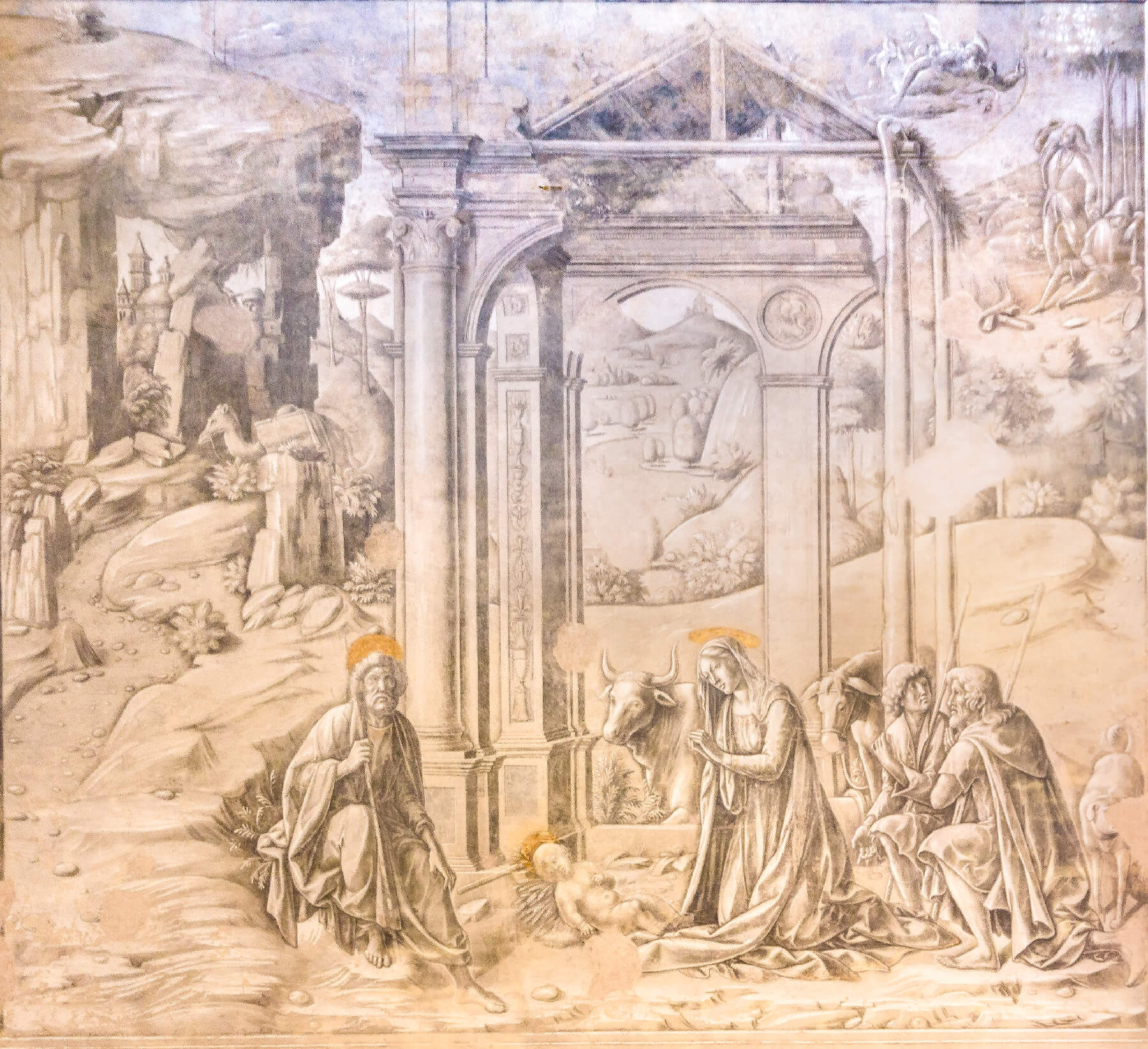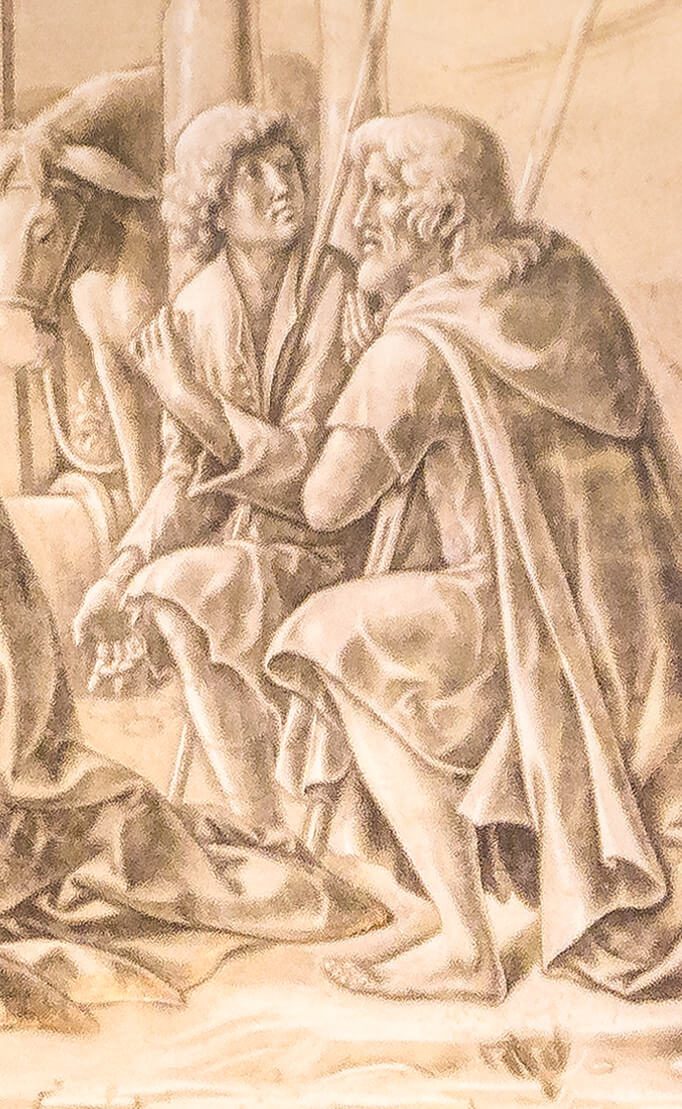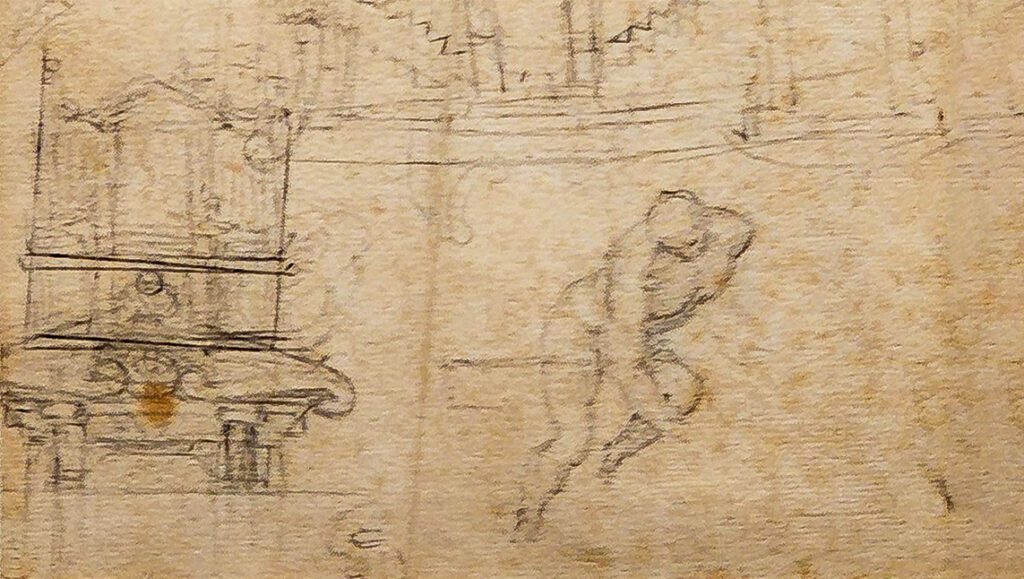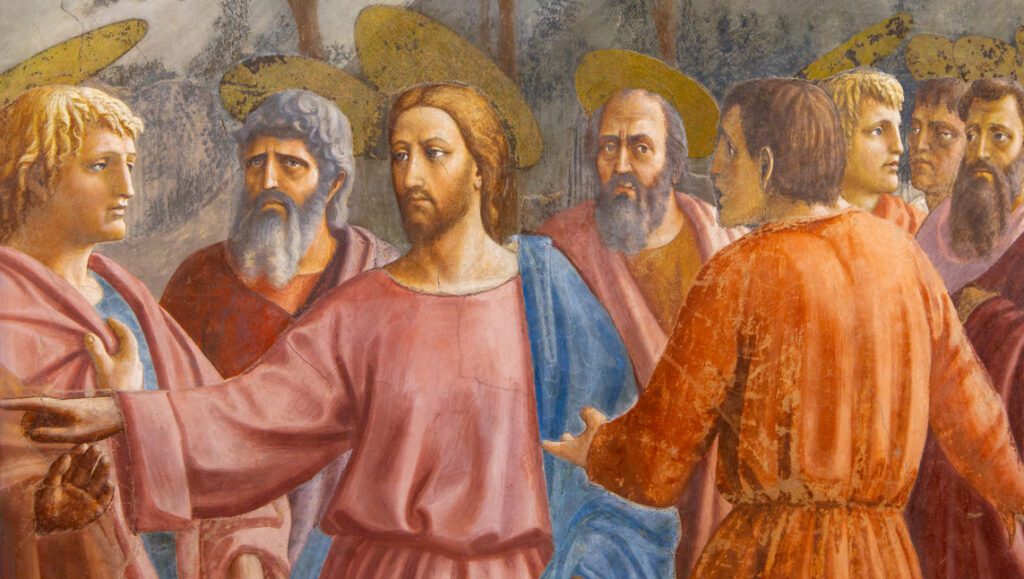
The Adoration of Shepherds, an unknown masterpiece
The Adoration of the Shepherds is an unknown masterpiece in a city like Siena where often it’s taxing to appreciate the extraordinary and varied artistic heritage preserved. Here it happens that some works – also due to the buildings closed to the public – remain almost unknown to most. The work I refer to is kept in the Bichi Chapel in the Church of Sant ‘Agostino in Siena.
This work, a monochrome fresco that remained hidden for centuries under the plaster that had been added in the eighteenth century, was rediscovered only a few decades ago; following the studies and restoration work carried out on the cycle, the work, together with the adjacent scene of the Nativity of the Virgin, has been attributed to Francesco di Giorgio Martini, one of the most multifaceted personalities of the second fifteenth century in Italy.

Adoration of the Shepherds, Francesco di Giorgio, 1488-94, Sant’Agostino Church, Siena
The Bichi family’s commissions
The frescoes, dated around 1490, were not an isolated work because they were part of a series of commissions that the Bichi family made to the Sienese artist in collaboration with another important painter, the cortonese Luca Signorelli, author of the panels of the great polyptych that decorated the altar of the family Chapel, dedicated to St. Christopher. Today conserved in various museums of Europe, the tables framed a statue of St. Christopher, a valuable wooden sculpture, created by Francesco di Giorgio and now kept at the National Gallery in London.
The monochromes of the chapel show how Francesco di Giorgio was updated on the stylistic features of Florentine painting, and this is evident both from the references to ancient architecture, a practice that was fashionable in Florence in those decades, and from specific references to Ghirlandaio’s painting. References to the Florentine artist’s painting can be found, for example, in the use of the same classical lexicon for the interior of the Nativity of the Virgin that Ghirlandaio painted in the cycle of the Tornabuoni Chapel in Santa Maria Novella – whose details are vaguely resumed by Francesco di Giorgio in the scene with the same subject in Sant’Agostino – or in the pose of the first shepherd from the right of the Adoration in the Sienese monochrome that directly recalls the figure of the shepherd painted by the Florentine artist in the altarpiece for the Sassetti Chapel in Santa Trinita and in which there is used to recognise the self-portrait of Ghirlandaio himself.

Detail of the Adoration of the Shepherds, Francesco di Giorgio, 1488-94, Sant’Agostino Church, Siena

Detail of the Adoration of the Shepherds, Domenico Ghirlandaio, 1485, Santa Trinita Church, Florence
Francesco di Giorgio, a skilful artist
The frescoes of the Bichi Chapel reach, thanks to the expertise of Francesco di Giorgio – a multifaceted artist who also practiced the art of engraving, as well as sculpture, painting and architecture – a great design quality and a highly effective perspective rendering . The chiaroscuro of the monochrome, a technique particularly used in the Renaissance – usually for decorative sections – is here enlivened by the Sienese artist with the insertion of points of light thanks to the gold in the haloes of the sacred figures.
Soon the end of the year will be greeted; the hope for the next year is that the church of Sant’Agostino, one of the places of the city that for wealth of history and art, can be visited more often, so that the public can appreciate inside the Francesco di Giorgio’s Adoration, one of the most beautiful works of Sienese painting in the Renaissance and un unknown masterpiece in Siena ⟣



